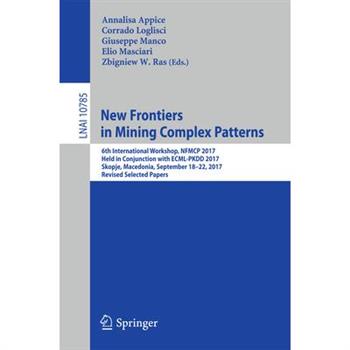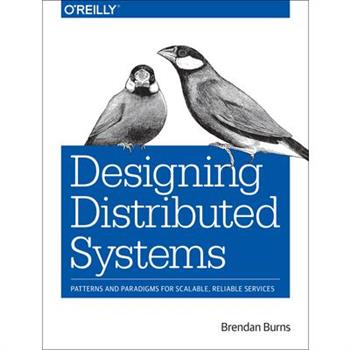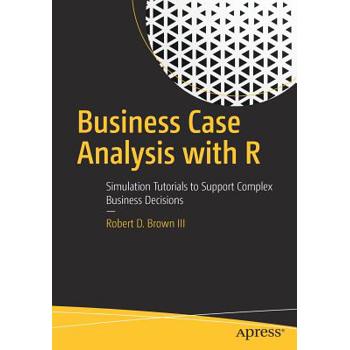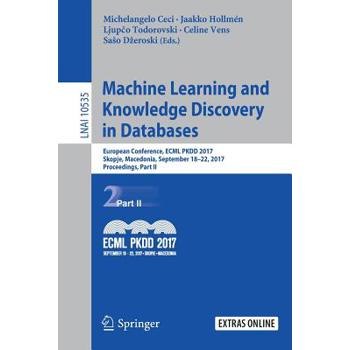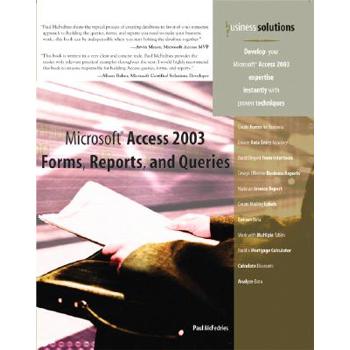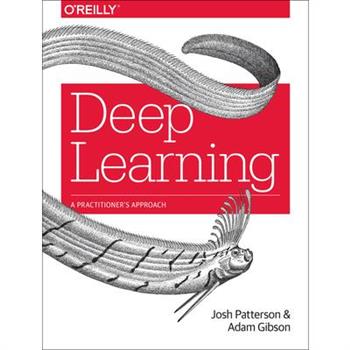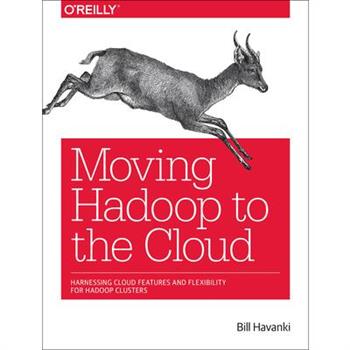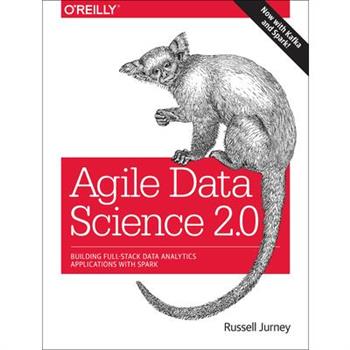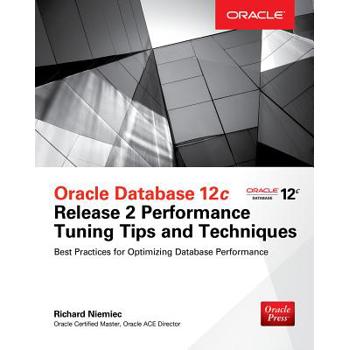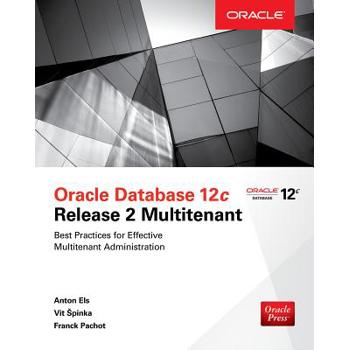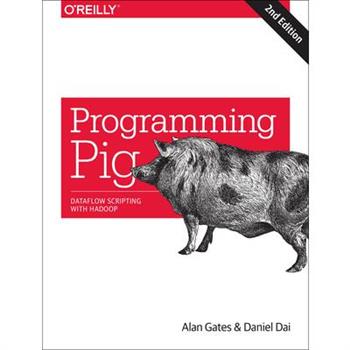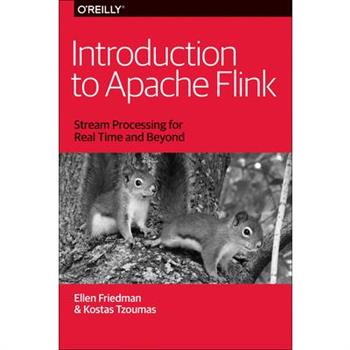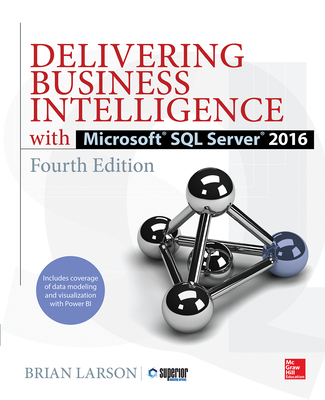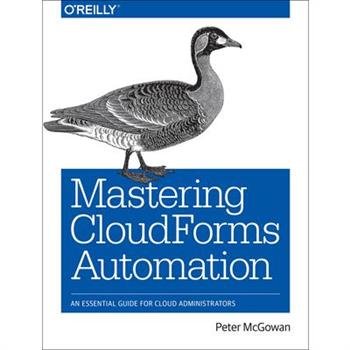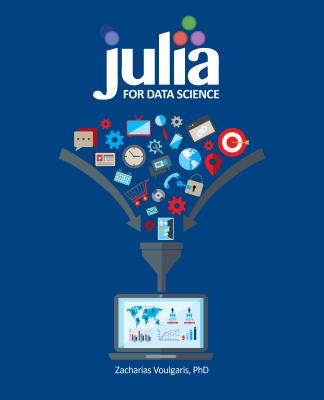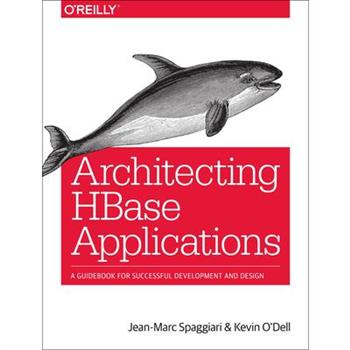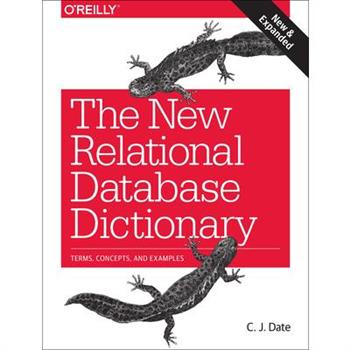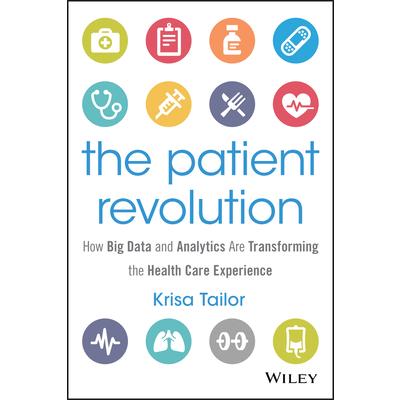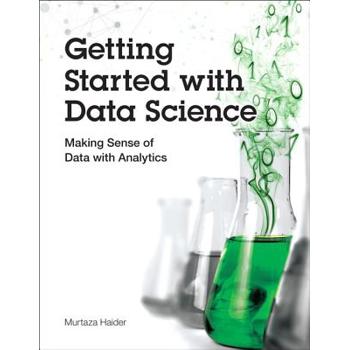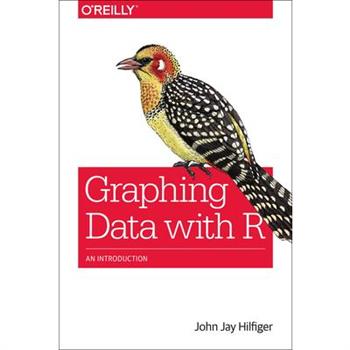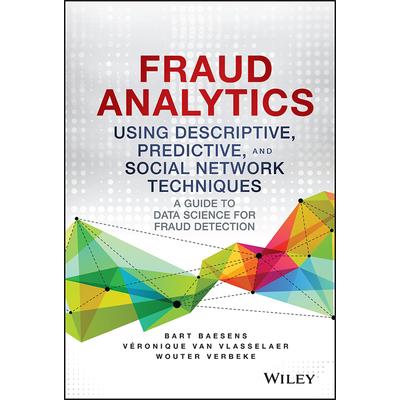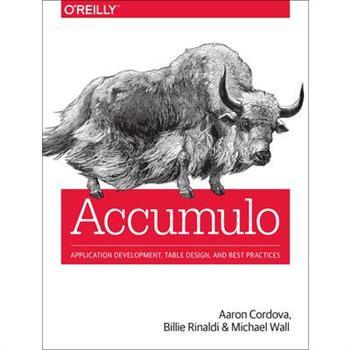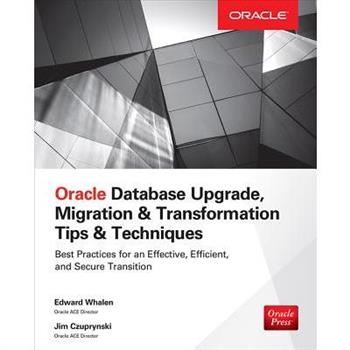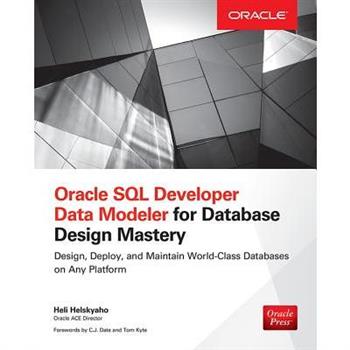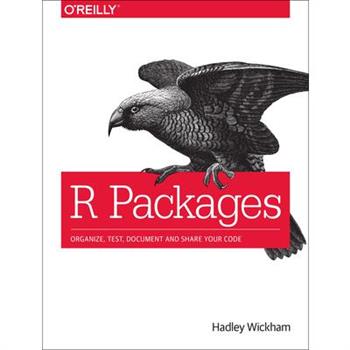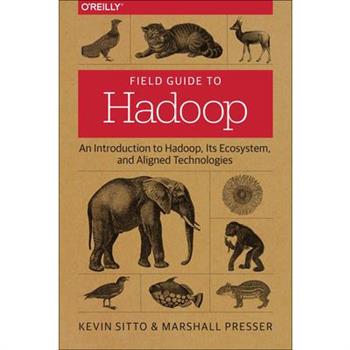New Frontiers in Mining Complex Patterns
This book features a collection of revised and significantly extended versions of the papers accepted for presentation at the 6th International Workshop on New Frontiers in Mining Complex Patterns, NFMCP 2017, held in conjunction with ECML-PKDD 2017 in Skopje, Macedonia, in September 2017. The book is composed of five parts: feature selection and induction; classification prediction; clustering; pattern discovery; applications.The workshop was aimed at discussing and introducing new algorithmic foundations and representation formalisms in complex pattern discovery. Finally, it encouraged the integration of recent results from existing fields, such as Statistics, Machine Learning and Big Data Analytics.
Designing Distributed Systems
Without established design patterns to guide them, developers have had to build distributed systems from scratch, and most of these systems are very unique indeed. Today, the increasing use of containers has paved the way for core distributed system patterns and reusable containerized components. This practical guide presents a collection of repeatable, generic patterns to help make the development of reliable distributed systems far more approachable and efficient. Author Brendan Burns璽 Director of Engineering at Microsoft Azure璽 demonstrates how you can adapt existing software design patterns for designing and building reliable distributed applications. Systems engineers and application developers will learn how these long-established patterns provide a common language and framework for dramatically increasing the quality of your system. Understand how patterns and reusable components enable the rapid development of reliable distributed systems Use the side-car, adapter, and ambassador patterns to split your application into a group of containers on a single machine Explore loosely coupled multi-node distributed patterns for replication, scaling, and communication between the components Learn distributed system patterns for large-scale batch data processing covering work-queues, event-based processing, and coordinated workflows
Business Case Analysis With R
This tutorial teaches you how to use the statistical programming language R to develop a business case simulation and analysis. It presents a methodology for conducting business case analysis that minimizes decision delay by focusing stakeholders on what matters most and suggests pathways for minimizing the risk in strategic and capital allocation decisions. Business case analysis, often conducted in spreadsheets, exposes decision makers to additional risks that arise just from the use of the spreadsheet environment. R has become one of the most widely used tools for reproducible quantitative analysis, and analysts fluent in this language are in high demand. The R language, traditionally used for statistical analysis, provides a more explicit, flexible, and extensible environment than spreadsheets for conducting business case analysis. The main tutorial follows the case in which a chemical manufacturing company considers constructing a chemical reactor and production facility to bring a new compound to market. There are numerous uncertainties and risks involved, including the possibility that a competitor brings a similar product online. The company must determine the value of making the decision to move forward and where they might prioritize their attention to make a more informed and robust decision. While the example used is a chemical company, the analysis structure it presents can be applied to just about any business decision, from IT projects to new product development to commercial real estate. The supporting tutorials include the perspective of the founder of a professional service firm who wants to grow his business and a member of a strategic planning group in a biomedical device company who wants to know how much to budget in order to refine the quality of information about critical uncertainties that might affect the value of a chosen product development pathway. What You'll LearnSet upa business case abstraction in an influence diagram to communicate the essence of the problem to other stakeholdersModel the inherent uncertainties in the problem with Monte Carlo simulation using the R languageCommunicate the results graphicallyDraw appropriate insights from the resultsDevelop creative decision strategies for thorough opportunity cost analysisCalculate the value of information on critical uncertainties between competing decision strategies to set the budget for deeper data analysisConstruct appropriate information to satisfy the parameters for the Monte Carlo simulation when little or no empirical data are available Who This Book Is For Financial analysts, data practitioners, and risk/business professionals; also appropriate for graduate level finance, business, or data science students
The Tech Professional's Guide to Communicating in a Global Workplace
Globalization and outsourcing are but two of the trends driving I.T. professionals toward environments in which they must communicate across cultural boundaries. Working effectively in multi-cultural situations is a path toward personal growth and better career choices, and ultimately toward better pay and greater influence in one's organization. Smart I.T. professionals will read and absorb the lessons in this book in order to address gaps their communication skill set. Readers will learn to better communicate across cultural boundaries of all types, ensuring that what they mean to say is what their colleagues actually perceive them to say.
SQL Server 2016 Administration Inside Out
Conquer SQL Server 2017 administration--from the inside out Dive into SQL Server 2017 administration--and really put your SQL Server DBA expertise to work. This supremely organized reference packs hundreds of timesaving solutions, tips, and workarounds--all you need to plan, implement, manage, and secure SQL Server 2017 in any production environment: on-premises, cloud, or hybrid. Four SQL Server experts offer a complete tour of DBA capabilities available in SQL Server 2017 Database Engine, SQL Server Data Tools, SQL Server Management Studio, and via PowerShell. Discover how experts tackle today's essential tasks--and challenge yourself to new levels of mastery. - Install, customize, and use SQL Server 2017's key administration and development tools - Manage memory, storage, clustering, virtualization, and other components - Architect and implement database infrastructure, including IaaS, Azure SQL, and hybrid cloud configurations - Provision SQL Server and Azure SQL databases - Secure SQL Server via encryption, row-level security, and data masking - Safeguard Azure SQL databases using platform threat protection, firewalling, and auditing - Establish SQL Server IaaS network security groups and user-defined routes - Administer SQL Server user security and permissions - Efficiently design tables using keys, data types, columns, partitioning, and views - Utilize BLOBs and external, temporal, and memory-optimized tables - Master powerful optimization techniques involving concurrency, indexing, parallelism, and execution plans - Plan, deploy, and perform disaster recovery in traditional, cloud, and hybrid environments For Experienced SQL Server Administrators and Other Database Professionals - Your role: Intermediate-to-advanced level SQL Server database administrator, architect, developer, or performance tuning expert - Prerequisites: Basic understanding of database administration procedures
Machine Learning and Knowledge Discovery in Databases
The three volume proceedings LNAI 10534 - 10536 constitutes the refereed proceedings of the European Conference on Machine Learning and Knowledge Discovery in Databases, ECML PKDD 2017, held in Skopje, Macedonia, in September 2017. The total of 101 regular papers presented in part I and part II was carefully reviewed and selected from 364 submissions; there are 47 papers in the applied data science, nectar and demo track. The contributions were organized in topical sections named as follows: Part I: anomaly detection; computer vision; ensembles and meta learning; feature selection and extraction; kernel methods; learning and optimization, matrix and tensor factorization; networks and graphs; neural networks and deep learning. Part II: pattern and sequence mining; privacy and security; probabilistic models and methods; recommendation; regression; reinforcement learning; subgroup discovery; time series and streams; transfer and multi-task learning; unsupervised and semisupervised learning. Part III: applied data science track; nectar track; and demo track.
Oracle Weblogic Server 12c Administration I Exam Iz0-133
Use this comprehensive guide to study for the Oracle WebLogic Server 12c Administration I Exam 1Z0-133. This book is a unique introductory resource to the WebLogic Server certification for new Oracle Fusion Middleware administrators and a valuable resource for veteran WebLogic Server administrators seeking to update their skills for the 12c certification topics. It is common sense that passing a certification exam requires a good command of the subject matter, understanding the intricacies surrounding its practice, and having sufficient experience working with the concepts. This book aims to accelerate the process by providing an accurate review of all exam topics, suggesting hands-on practices to gain or reinforce experience working with WebLogic Server, and introducing questions to help candidates become familiar with the format and style of questions found on the actual certification exam. Oracle WebLogic Server 12c Administration I Exam 1Z0-133 covers the associate level certification with Oracle. Although not dedicated to exam 1Z0-599, the guide is also a valuable foundational resource for those preparing for WebLogic Server 12c implementation specialist level certification. This book: Inspects the certification topics in the order that you would likely follow in an on-the-job middleware infrastructure projectIs a great resource for candidates preparing for the certification, who are unable to start with live or personally-assisted trainingIs a great starting point for those pursuing advanced Oracle WebLogic Server certifications What You'll Learn Cover all topics on the certification exam 1Z0-133Become familiar with the types and format of questions on the certification examUnderstand and properly describe Oracle WebLogic Server domains and clustersInstall, configure, maintain, and monitor Oracle WebLogic ServerDeploy and manage applications on Oracle WebLogic ServerDiscover how to use new administration features of Oracle WebLogic Server 12c Who This Book Is For Certified Oracle WebLogic administrators seeking to update their Oracle WebLogic Server credentials, as well as experienced WebLogic Server administrators seeking to earn certification for the first time. Non-Oracle administrators seeking to earn a WebLogic Server certification will also find this book useful.
Microsoft Access 2003 Forms, Reports, and Queries
Microsoft Access is a large, intimidating program. Unlike Word or Excel where users can perform basic tasks without much in the way of training, Access presents challenges from the outset. Most users never progress beyond creating simple tables and using Wizards to create basic forms and reports. At the same time, all users - from managers to researchers to administrative assistants - need to know that what they seek is embedded somewhere in their Access tables. Without a more sophisticated knowledge of how to extract and present that data, they are forced to rely on office gurus and overworked IT people to provide canned reports or one-size-fits-all solutions.This book changes all that by giving readers the skills required to etract the data they need (queries), build efficient front-ends for that data (forms), and publish the results in an attractive and easy-to-read format (reports). To that end, this book shuns the big Access picture and instead focuses intently on queries, forms, and reports. This in-depth approach will give the reader the skills and understanding he or she needs to get at the data and prove the old adage that knowledge is indeed power.
Deep Learning
Although interest in machine learning has reached a high point, lofty expectations often scuttle projects before they get very far. How can machine learning璽 especially deep neural networks璽 make a real difference in your organization? This hands-on guide not only provides the most practical information available on the subject, but also helps you get started building efficient deep learning networks. Authors Adam Gibson and Josh Patterson provide theory on deep learning before introducing their open-source Deeplearning4j (DL4J) library for developing production-class workflows. Through real-world examples, you璽 ll learn methods and strategies for training deep network architectures and running deep learning workflows on Spark and Hadoop with DL4J. Dive into machine learning concepts in general, as well as deep learning in particular Understand how deep networks evolved from neural network fundamentals Explore the major deep network architectures, including Convolutional and Recurrent Learn how to map specific deep networks to the right problem Walk through the fundamentals of tuning general neural networks and specific deep network architectures Use vectorization techniques for different data types with DataVec, DL4J璽 s workflow tool Learn how to use DL4J natively on Spark and Hadoop
Moving Hadoop to the Cloud
Until recently, Hadoop deployments existed on hardware owned and run by organizations. Now, of course, you can acquire the computing resources and network connectivity to run Hadoop clusters in the cloud. But there's a lot more to deploying Hadoop to the public cloud than simply renting machines. This hands-on guide shows developers and systems administrators familiar with Hadoop how to install, use, and manage cloud-born clusters efficiently. You'll learn how to architect clusters that work with cloud-provider features--not just to avoid pitfalls, but also to take full advantage of these services. You'll also compare the Amazon, Google, and Microsoft clouds, and learn how to set up clusters in each of them. Learn how Hadoop clusters run in the cloud, the problems they can help you solve, and their potential drawbacks Examine the common concepts of cloud providers, including compute capabilities, networking and security, and storage Build a functional Hadoop cluster on cloud infrastructure, and learn what the major providers require Explore use cases for high availability, relational data with Hive, and complex analytics with Spark Get patterns and practices for running cloud clusters, from designing for price and security to dealing with maintenance
Analytics
Learn how big data and other sources of information can be transformed into valuable knowledge - knowledge that can create incredible competitive advantage to propel a business toward market leadership. Learn through examples and experience exactly how to pick projects and build analytics teams that deliver results. Know the ethical and privacy issues, and apply the three-part litmus test of context, permission, and accuracy.Without a doubt, data and analytics are the new source of competitive advantage, but how do executives go from hype to action? That's the objective of this book - to assist executives in making the right investments in the right place and at the right time in order to reap the full benefits of data analytics.
Agile Data Science
Data science teams looking to turn research into useful analytics applications require not only the right tools, but also the right approach if they're to succeed. With the revised second edition of this hands-on guide, up-and-coming data scientists will learn how to use the Agile Data Science development methodology to build data applications with Python, Apache Spark, Kafka, and other tools. Author Russell Jurney demonstrates how to compose a data platform for building, deploying, and refining analytics applications with Apache Kafka, MongoDB, ElasticSearch, d3.js, scikit-learn, and Apache Airflow. You'll learn an iterative approach that lets you quickly change the kind of analysis you're doing, depending on what the data is telling you. Publish data science work as a web application, and affect meaningful change in your organization. Build value from your data in a series of agile sprints, using the data-value pyramid Extract features for statistical models from a single dataset Visualize data with charts, and expose different aspects through interactive reports Use historical data to predict the future via classification and regression Translate predictions into actions Get feedback from users after each sprint to keep your project on track
High Performance Spark
Apache Spark is amazing when everything clicks. But if you haven't seen the performance improvements you expected, or still don't feel confident enough to use Spark in production, this practical book is for you. Authors Holden Karau and Rachel Warren demonstrate performance optimizations to help your Spark queries run faster and handle larger data sizes, while using fewer resources. Ideal for software engineers, data engineers, developers, and system administrators working with large-scale data applications, this book describes techniques that can reduce data infrastructure costs and developer hours. Not only will you gain a more comprehensive understanding of Spark, you'll also learn how to make it sing. With this book, you'll explore: How Spark SQL's new interfaces improve performance over SQL's RDD data structure The choice between data joins in Core Spark and Spark SQL Techniques for getting the most out of standard RDD transformations How to work around performance issues in Spark's key/value pair paradigm Writing high-performance Spark code without Scala or the JVM How to test for functionality and performance when applying suggested improvements Using Spark MLlib and Spark ML machine learning libraries Spark's Streaming components and external community packages
Mastering Azure Analytics
Microsoft Azure has over 20 platform-as-a-service (PaaS) offerings that can act in support of a big data analytics solution. So which one is right for your project? This practical book helps you understand the breadth of Azure services by organizing them into a reference framework you can use when crafting your own big data analytics solution. You'll not only be able to determine which service best fits the job, but also learn how to implement a complete solution that scales, provides human fault tolerance, and supports future needs. Understand the fundamental patterns of the data lake and lambda architecture Recognize the canonical steps in the analytics data pipeline and learn how to use Azure Data Factory to orchestrate them Implement data lakes and lambda architectures, using Azure Data Lake Store, Data Lake Analytics, HDInsight (including Spark), Stream Analytics, SQL Data Warehouse, and Event Hubs Understand where Azure Machine Learning fits into your analytics pipeline Gain experience using these services on real-world data that has real-world problems, with scenarios ranging from aviation to Internet of Things (IoT)
Oracle Database 12c Release 2 Performance Tuning Tips and Techniques
Publisher's Note: Products purchased from Third Party sellers are not guaranteed by the publisher for quality, authenticity, or access to any online entitlements included with the product.Proven Database Optimization Solutions―Fully Updated for Oracle Database 12c Release 2Systematically identify and eliminate database performance problems with help from Oracle Certified Master Richard Niemiec. Filled with real-world case studies and best practices, Oracle Database 12c Release 2 Performance Tuning Tips and Techniques details the latest monitoring, troubleshooting, and optimization methods. Find out how to identify and fix bottlenecks on premises and in the cloud, configure storage devices, execute effective queries, and develop bug-free SQL and PL/SQL code. Testing, reporting, and security enhancements are also covered in this Oracle Press guide.- Properly index and partition Oracle Database 12c Release 2- Work effectively with Oracle Cloud, Oracle Exadata, and Oracle Enterprise Manager- Efficiently manage disk drives, ASM, RAID arrays, and memory- Tune queries with Oracle SQL hints and the Trace utility- Troubleshoot databases using V$ views and X$ tables- Create your first cloud database service and prepare for hybrid cloud- Generate reports using Oracle's Statspack and Automatic Workload Repository tools- Use sar, vmstat, and iostat to monitor operating system statistics
Oracle Database 12c Release 2 Multitenant
Publisher's Note: Products purchased from Third Party sellers are not guaranteed by the publisher for quality, authenticity, or access to any online entitlements included with the product.Master the Powerful Multitenant Features of Oracle Database 12cGovern a scalable, extensible, and highly available enterprise database environment using the practical information contained in this Oracle Press guide. Written by a team of Oracle Masters, Oracle Database 12c Release 2 Multitenant shows, step-by-step, how to deploy and manage multitenant configurations across IT frameworks of all types and sizes. Find out how to create databases, work with PDBs and CDBs, administer Oracle Net Services, and automate administrative tasks. Backup and recovery, security, and advanced multitenant options are covered in complete detail.Learn how to: - Build high-performance multitenant Oracle databases- Create single-tenant, multitenant, and application containers- Establish network connections and manage services- Handle security using authentication, authorization, and encryption- Back up and restore your mission-critical data- Work with point-in-time recovery and Oracle Flashback- Move data and replicate and clone databases- Work with Oracle's Resource Manager and Data Guard
Programming Pig
For many organizations, Hadoop is the first step for dealing with massive amounts of data. The next step? Processing and analyzing datasets with the Apache Pig scripting platform. With Pig, you can batch-process data without having to create a full-fledged application, making it easy to experiment with new datasets. Updated with use cases and programming examples, this second edition is the ideal learning tool for new and experienced users alike. You'll find comprehensive coverage on key features such as the Pig Latin scripting language and the Grunt shell. When you need to analyze terabytes of data, this book shows you how to do it efficiently with Pig. Delve into Pig's data model, including scalar and complex data types Write Pig Latin scripts to sort, group, join, project, and filter your data Use Grunt to work with the Hadoop Distributed File System (HDFS) Build complex data processing pipelines with Pig's macros and modularity features Embed Pig Latin in Python for iterative processing and other advanced tasks Use Pig with Apache Tez to build high-performance batch and interactive data processing applications Create your own load and store functions to handle data formats and storage mechanisms
Introduction to Apache Flink
There's growing interest in learning how to analyze streaming data in large-scale systems such as web traffic, financial transactions, machine logs, industrial sensors, and many others. But analyzing data streams at scale has been difficult to do well--until now. This practical book delivers a deep introduction to Apache Flink, a highly innovative open source stream processor with a surprising range of capabilities. Authors Ellen Friedman and Kostas Tzoumas show technical and nontechnical readers alike how Flink is engineered to overcome significant tradeoffs that have limited the effectiveness of other approaches to stream processing. You'll also learn how Flink has the ability to handle both stream and batch data processing with one technology. Learn the consequences of not doing streaming well--in retail and marketing, IoT, telecom, and banking and finance Explore how to design data architecture to gain the best advantage from stream processing Get an overview of Flink's capabilities and features, along with examples of how companies use Flink, including in production Take a technical dive into Flink, and learn how it handles time and stateful computation Examine how Flink processes both streaming (unbounded) and batch (bounded) data without sacrificing performance
Delivering Business Intelligence With Microsoft SQL Server 2016
Publisher's Note: Products purchased from Third Party sellers are not guaranteed by the publisher for quality, authenticity, or access to any online entitlements included with the product.Distribute Actionable, Timely BI with Microsoft(R) SQL Server(R) 2016 and Power BIDrive better, faster, more informed decision making across your organization using the expert tips and best practices featured in this hands-on guide. Delivering Business Intelligence with Microsoft SQL Server 2016, Fourth Edition, shows, step-by-step, how to distribute high-performance, custom analytics to users enterprise-wide. Discover how to build BI Semantic Models, create data marts and OLAP cubes, write MDX and DAX scripts, and share insights using Microsoft client tools. The book includes coverage of self-service business intelligence with Power BI.- Understand the goals and components of successful BI- Build data marts, OLAP cubes, and Tabular models- Load and cleanse data with SQL Server Integration Services- Manipulate and analyze data using MDX and DAX scripts and queries- Work with SQL Server Analysis Services and the BI Semantic Model- Author interactive reports using SQL Server Data Tools- Create KPIs and digital dashboards - Implement time-based analytics- Embed data model content in custom applications using ADOMD.NET- Use Power BI to gather, model, and visualize data in a self-service environment
Date on Database
C. J. Date is one of the founding fathers of the relational database field. Of all the early leaders, Date is by far the most prolific, and is arguably the most authoritative (Even today "Date says" carries a lot of weight). Many of today's more seasoned database professionals "grew up" on Date's writings. Those same professionals, along with other serious database students and practitioners, form the core audience for Date's ongoing writing efforts. Date on Database: Writings 2000-2006 is a compilation of Date's most significant articles and papers over the past seven years. It gives readers a one-stop place in which to find Date's latest thinking on relational technology. Many papers are not easily found outside this book. Readers who want the material will gladly pay the price for the book.
Mastering Cloudforms Automation
Learn how to work with the Automate feature of CloudForms, the powerful Red Hat cloud management platform that lets you administer your virtual infrastructure, including hybrid public and private clouds. This practical hands-on introduction shows you how to increase your operational efficiency by automating day-to-day tasks that now require manual input. Throughout the book, author Peter McGowan provides a combination of theoretical information and practical coding examples to help you learn the Automate object model. With this CloudForms feature, you can create auto-scalable cloud applications, eliminate manual decisions and operations when provisioning virtual machines and cloud instances, and manage your complete virtual machine lifecycle. In six parts, this book helps you: Learn the objects and concepts for developing automation scripts with CloudForms Automate Customize the steps and workflows involved in provisioning virtual machines Create and use service catalogs, items, dialogs, objects, bundles, and hierarchies Use CloudForm's updated workflow to retire and delete virtual machines and services Orchestrate and coordinate with external services as part of a workflow Explore distributed automation processing as well as argument passing and handling
Julia for Data Science
After covering the importance of Julia to the data science community and several essential data science principles, we start with the basics including how to install Julia and its powerful libraries. Many examples are provided as we illustrate how to leverage each Julia command, dataset, and function.Specialized script packages are introduced and described. Hands-on problems representative of those commonly encountered throughout the data science pipeline are provided, and we guide you in the use of Julia in solving them using published datasets. Many of these scenarios make use of existing packages and built-in functions, as we cover: An overview of the data science pipeline along with an example illustrating the key points, implemented in Julia Options for Julia IDEs Programming structures and functions Engineering tasks, such as importing, cleaning, formatting and storing data, as well as performing data preprocessing Data visualization and some simple yet powerful statistics for data exploration purposes Dimensionality reduction and feature evaluation Machine learning methods, ranging from unsupervised (different types of clustering) to supervised ones (decision trees, random forests, basic neural networks, regression trees, and Extreme Learning Machines) Graph analysis including pinpointing the connections among the various entities and how they can be mined for useful insights. Each chapter concludes with a series of questions and exercises to reinforce what you learned. The last chapter of the book will guide you in creating a data science application from scratch using Julia.
Architecting Hbase Applications
HBase is a remarkable tool for indexing mass volumes of data, but getting started with this distributed database and its ecosystem can be daunting. With this hands-on guide, you'll learn how to architect, design, and deploy your own HBase applications by examining real-world solutions. Along with HBase principles and cluster deployment guidelines, this book includes in-depth case studies that demonstrate how large companies solved specific use cases with HBase. Authors Jean-Marc Spaggiari and Kevin O'Dell also provide draft solutions and code examples to help you implement your own versions of those use cases, from master data management (MDM) and document storage to near real-time event processing. You'll also learn troubleshooting techniques to help you avoid common deployment mistakes. Learn exactly what HBase does, what its ecosystem includes, and how to set up your environment Explore how real-world HBase instances were deployed and put into production Examine documented use cases for tracking healthcare claims, digital advertising, data management, and product quality Understand how HBase works with tools and techniques such as Spark, Kafka, MapReduce, and the Java API Learn how to identify the causes and understand the consequences of the most common HBase issues
Data Lake Architecture
Organizations invest incredible amounts of time and money obtaining and then storing big data in data stores called data lakes. But how many of these organizations can actually get the data back out in a useable form? Very few can turn the data lake into an information gold mine. Most wind up with garbage dumps.Data Lake Architecture will explain how to build a useful data lake, where data scientists and data analysts can solve business challenges and identify new business opportunities. Learn how to structure data lakes as well as analog, application, and text-based data ponds to provide maximum business value. Understand the role of the raw data pond and when to use an archival data pond. Leverage the four key ingredients for data lake success: metadata, integration mapping, context, and metaprocess.Bill Inmon opened our eyes to the architecture and benefits of a data warehouse, and now he takes us to the next level of data lake architecture.
The New Relational Database Dictionary
No matter what DBMS you are using--Oracle, DB2, SQL Server, MySQL, PostgreSQL--misunderstandings can always arise over the precise meanings of terms, misunderstandings that can have a serious effect on the success of your database projects. For example, here are some common database terms: attribute, BCNF, consistency, denormalization, predicate, repeating group, join dependency. Do you know what they all mean? Are you sure? The New Relational Database Dictionary defines all of these terms and many, many more. Carefully reviewed for clarity, accuracy, and completeness, this book is an authoritative and comprehensive resource for database professionals, with over 1700 entries (many with examples) dealing with issues and concepts arising from the relational model of data. DBAs, database designers, DBMS implementers, application developers, and database professors and students can find the information they need on a daily basis, information that isn't readily available anywhere else.
The Patient Revolution
In The Patient Revolution, author Krisa Tailor--a noted expert in health care innovation and management--explores, through the lens of design thinking, how information technology will take health care into the experience economy. In the experience economy, patients will shift to being empowered consumers who are active participants in their own care. Tailor explores this shift by creating a vision for a newly designed health care system that's focused on both sickness and wellness, and is driven by data and analytics. The new system seamlessly integrates health into our daily lives, and delivers care so uniquely personalized that no two people are provided identical treatments. Connected through data, everyone across the health care ecosystem, including clinicians, insurers, and researchers, will be able to meet individuals wherever they are in their health journey to reach the ultimate goal of keeping people healthy. The patient revolution has just begun and an exciting journey awaits us. Praise for the patient revolution "A full 50% of the US population has at least one chronic disease that requires ongoing monitoring and treatment. Our current health care system is woefully inadequate in providing these individuals with the treatment and support they need. This disparity can only be addressed through empowering patients to better care for themselves and giving providers better tools to care for their patients. Both of those solutions will require the development and application of novel technologies. In Krisa Tailor's book The Patient Revolution, a blueprint is articulated for how this could be achieved, culminating in a vision for a learning health system within 10 years." --Ricky Bloomfield, MD, Director, Mobile Technology Strategy; Assistant Professor, Duke Medicine "In The Patient Revolution, Krisa Tailor astutely points out that 80% of health is impacted by factors outside of the health care system. Amazon unfortunately knows more about our patients than we do. The prescriptive analytics she describes will allow health care providers to use big data to optimize interventions at the level of the individual patient. The use of analytics will allow providers to improve quality, shape care coordination, and contain costs. Advanced analytics will lead to personalized care and ultimately empowered patients!" --Linda Butler, MD, Vice President of Medical Affairs/Chief Medical Officer/Chief Medical Information Officer, Rex Healthcare "The Patient Revolution provides a practical roadmap on how the industry can capture value by making health and care more personalized, anticipatory, and intuitive to patient needs." --Ash Damle, CEO, Lumiata "Excellent read. For me, health care represents a unique economy--one focused on technology, but requiring a deep understanding of humanity. Ms. Tailor begins the exploration of how we provide care via the concepts of design thinking, asking how we might redesign care with an eye toward changing the experience. She does an excellent job deconstructing this from the patient experience. I look forward to a hopeful follow-up directed at changing the provider culture." --Alan Pitt, MD, Chief Medical Officer, Avizia "Whether you're a health care provider looking to gain an understanding of the health care landscape, a health data scientist, or a seasoned business pro, you'll come away with a deeper, nuanced understanding of today's evolving health care system with this book. Krisa Tailor ties together--in a comprehensive, unique way--the worlds of health care administration, clinical practice, design thinking, and business strategy and innovation." --Steven Chan, MD, MBA, University of California, Davis
Getting Started With Data Science
Master Data Analytics Hands-On by Solving Fascinating Problems You'll Actually Enjoy! Harvard Business Review recently called data science "The Sexiest Job of the 21st Century." It's not just sexy: For millions of managers, analysts, and students who need to solve real business problems, it's indispensable. Unfortunately, there's been nothing easy about learning data science-until now. Getting Started with Data Science takes its inspiration from worldwide best-sellers like Freakonomics and Malcolm Gladwell's Outliers: It teaches through a powerful narrative packed with unforgettable stories. Murtaza Haider offers informative, jargon-free coverage of basic theory and technique, backed with plenty of vivid examples and hands-on practice opportunities. Everything's software and platform agnostic, so you can learn data science whether you work with R, Stata, SPSS, or SAS. Best of all, Haider teaches a crucial skillset most data science books ignore: how to tell powerful stories using graphics and tables. Every chapter is built around real research challenges, so you'll always know why you're doing what you're doing. You'll master data science by answering fascinating questions, such as: - Are religious individuals more or less likely to have extramarital affairs? - Do attractive professors get better teaching evaluations? - Does the higher price of cigarettes deter smoking? - What determines housing prices more: lot size or the number of bedrooms? - How do teenagers and older people differ in the way they use social media? - Who is more likely to use online dating services? - Why do some purchase iPhones and others Blackberry devices? - Does the presence of children influence a family's spending on alcohol? For each problem, you'll walk through defining your question and the answers you'll need; exploring how others have approached similar challenges; selecting your data and methods; generating your statistics; organizing your report; and telling your story. Throughout, the focus is squarely on what matters most: transforming data into insights that are clear, accurate, and can be acted upon.
Learning to Love Data Science
Until recently, many people thought big data was a passing fad. "Data science" was an enigmatic term. Today, big data is taken seriously, and data science is considered downright sexy. With this anthology of reports from award-winning journalist Mike Barlow, you'll appreciate how data science is fundamentally altering our world, for better and for worse.Barlow paints a picture of the emerging data space in broad strokes. From new techniques and tools to the use of data for social good, you'll find out how far data science reaches.With this anthology, you'll learn how: Analysts can now get results from their data queries in near real timeIndie manufacturers are blurring the lines between hardware and softwareCompanies try to balance their desire for rapid innovation with the need to tighten data securityAdvanced analytics and low-cost sensors are transforming equipment maintenance from a cost center to a profit centerCIOs have gradually evolved from order takers to business innovatorsNew analytics tools let businesses go beyond data analysis and straight to decision-makingMike Barlow is an award-winning journalist, author, and communications strategy consultant. Since launching his own firm, Cumulus Partners, he has represented major organizations in a number of industries.
Big Data Analytics With Microsoft Hdinsight in 24 Hours
Sams Teach Yourself Big Data Analytics with Microsoft HDInsight in 24 Hours In just 24 lessons of one hour or less, Sams Teach Yourself Big Data Analytics with Microsoft HDInsight in 24 Hours helps you leverage Hadoop's power on a flexible, scalable cloud platform using Microsoft's newest business intelligence, visualization, and productivity tools. This book's straightforward, step-by-step approach shows you how to provision, configure, monitor, and troubleshoot HDInsight and use Hadoop cloud services to solve real analytics problems. You'll gain more of Hadoop's benefits, with less complexity-even if you're completely new to Big Data analytics. Every lesson builds on what you've already learned, giving you a rock-solid foundation for real-world success. Practical, hands-on examples show you how to apply what you learn Quizzes and exercises help you test your knowledge and stretch your skills Notes and tips point out shortcuts and solutions Learn how to... - Master core Big Data and NoSQL concepts, value propositions, and use cases - Work with key Hadoop features, such as HDFS2 and YARN - Quickly install, configure, and monitor Hadoop (HDInsight) clusters in the cloud - Automate provisioning, customize clusters, install additional Hadoop projects, and administer clusters - Integrate, analyze, and report with Microsoft BI and Power BI - Automate workflows for data transformation, integration, and other tasks - Use Apache HBase on HDInsight - Use Sqoop or SSIS to move data to or from HDInsight - Perform R-based statistical computing on HDInsight datasets - Accelerate analytics with Apache Spark - Run real-time analytics on high-velocity data streams - Write MapReduce, Hive, and Pig programs Register your book at informit.com/register for convenient access to downloads, updates, and corrections as they become available.
Graphing Data With R
It's much easier to grasp complex data relationships with a graph than by scanning numbers in a spreadsheet. This introductory guide shows you how to use the R language to create a variety of useful graphs for visualizing and analyzing complex data for science, business, media, and many other fields. You'll learn methods for highlighting important relationships and trends, reducing data to simpler forms, and emphasizing key numbers at a glance. Anyone who wants to analyze data will find something useful here--even if you don't have a background in mathematics, statistics, or computer programming. If you want to examine data related to your work, this book is the ideal way to start. Get started with R by learning basic commands Build single variable graphs, such as dot and pie charts, box plots, and histograms Explore the relationship between two quantitative variables with scatter plots, high-density plots, and other techniques Use scatterplot matrices, 3D plots, clustering, heat maps, and other graphs to visualize relationships among three or more variables
Hadoop 2 Quick-start Guide
Get Started Fast with Apache Hadoop(R) 2, YARN, and Today's Hadoop Ecosystem With Hadoop 2.x and YARN, Hadoop moves beyond MapReduce to become practical for virtually any type of data processing. Hadoop 2.x and the Data Lake concept represent a radical shift away from conventional approaches to data usage and storage. Hadoop 2.x installations offer unmatched scalability and breakthrough extensibility that supports new and existing Big Data analytics processing methods and models. Hadoop(R) 2 Quick-Start Guide is the first easy, accessible guide to Apache Hadoop 2.x, YARN, and the modern Hadoop ecosystem. Building on his unsurpassed experience teaching Hadoop and Big Data, author Douglas Eadline covers all the basics you need to know to install and use Hadoop 2 on personal computers or servers, and to navigate the powerful technologies that complement it. Eadline concisely introduces and explains every key Hadoop 2 concept, tool, and service, illustrating each with a simple "beginning-to-end" example and identifying trustworthy, up-to-date resources for learning more. This guide is ideal if you want to learn about Hadoop 2 without getting mired in technical details. Douglas Eadline will bring you up to speed quickly, whether you're a user, admin, devops specialist, programmer, architect, analyst, or data scientist. Coverage Includes Understanding what Hadoop 2 and YARN do, and how they improve on Hadoop 1 with MapReduce Understanding Hadoop-based Data Lakes versus RDBMS Data Warehouses Installing Hadoop 2 and core services on Linux machines, virtualized sandboxes, or clusters Exploring the Hadoop Distributed File System (HDFS) Understanding the essentials of MapReduce and YARN application programming Simplifying programming and data movement with Apache Pig, Hive, Sqoop, Flume, Oozie, and HBase Observing application progress, controlling jobs, and managing workflows Managing Hadoop efficiently with Apache Ambari-including recipes for HDFS to NFSv3 gateway, HDFS snapshots, and YARN configuration Learning basic Hadoop 2 troubleshooting, and installing Apache Hue and Apache Spark
Machine Learning and Data Science
A practitioner's tools have a direct impact on the success of his or her work. This book will provide the data scientist with the tools and techniques required to excel with statistical learning methods in the areas of data access, data munging, exploratory data analysis, supervised machine learning, unsupervised machine learning and model evaluation. Machine learning and data science are large disciplines, requiring years of study in order to gain proficiency. This book can be viewed as a set of essential tools we need for a long-term career in the data science field - recommendations are provided for further study in order to build advanced skills in tackling important data problem domains.The R statistical environment was chosen for use in this book. R is a growing phenomenon worldwide, with many data scientists using it exclusively for their project work. All of the code examples for the book are written in R. In addition, many popular R packages and data sets will be used.
Teach Yourself T-sql in One Hour a Day
Master T-SQL database design, development, and administration the easy way-hands-on! In just one hour a day, you'll build all the skills you need to create effective database applications with T-SQL and SQL Server. With this complete tutorial, you'll quickly master the basics and then move on to more advanced features and concepts: Learn the fundamentals of T-SQL from the ground up, one step at a time Succeed with the newest versions of T-SQL, SQL Server, and SQL Server Management Studio Use T-SQL effectively as both an application developer and DBA Master powerful stored procedures, triggers, transactions, and user-defined functions (UDFs) Systematically optimize and secure your SQL Server databases Learn on your own time, at your own pace No previous T-SQL or database programming experience required Learn how to design efficient, reliable SQL Server databases Define efficient tables, table relationships, fields, and constraints Make the most of T-SQL's SELECT and UPDATE statements Work effectively with simple and complex views and joins Master stored procedure techniques every developer should know Build and use powerful User-Defined Functions (UDFs) Secure databases with authentication, roles, permissions, and principals Configure, maintain, and tune SQL Server for maximum reliability, performance, and value Back up, restore, and audit databases Optimize databases with the SQL Server Profiler, System Monitor, and Index Tuning Wizard Leverage valuable insight and time saving techniques from a world renowned database expert Register your book at informit.com/register for access to source code, example files, updates, and corrections as they become available.
Oracle Data Integration
Publisher's Note: Products purchased from Third Party sellers are not guaranteed by the publisher for quality, authenticity, or access to any online entitlements included with the product.Deliver continuous access to timely and accurate BI across your enterprise using the detailed information in this Oracle Press guideThrough clear explanations and practical examples, a team of Oracle experts shows how to assimilate data from disparate sources into a single, unified view. Find out how to transform data in real time, handle replication and migration, and deploy Oracle Data Integrator and Oracle GoldenGate. Oracle Data Integration: Tools for Harnessing Data offers complete coverage of the latest "big data" hardware and software solutions. -Efficiently move data both inside and outside an Oracle environment-Map sources to database fields using Data Merge and ETL-Export schema through transportable tablespaces and Oracle Data Pump-Capture and apply changes across heterogeneous systems with Oracle GoldenGate-Seamlessly exchange information between databases using Oracle Data Integrator-Correct errors and maximize quality through data cleansing and validation-Plan and execute successful Oracle Database migrations and replications-
Oracle Pl/Sql Language Pocket Reference
Be more productive with the Oracle PL/SQL language. The fifth edition of this popular pocket reference puts the syntax of specific PL/SQL language elements right at your fingertips, including features added in Oracle Database 12c. Whether you're a developer or database administrator, when you need answers quickly, the Oracle PL/SQL Language Pocket Reference will save you hours of frustration with concise summaries of: Fundamental language elements, such as block structure, datatypes, and declarations Statements for program control, cursor management, and exception handling Records, procedures, functions, triggers, and packages Execution of PL/SQL functions in SQL Compilation options, object-oriented features, collections, and Java integration This handy pocket reference is a perfect companion to Steven Feuerstein and Bill Pribyl's bestselling Oracle PL/SQL Programming.
Fraud Analytics Using Descriptive, Predictive, and Social Network Techniques
Detect fraud earlier to mitigate loss and prevent cascading damage Fraud Analytics Using Descriptive, Predictive, and Social Network Techniques is an authoritative guidebook for setting up a comprehensive fraud detection analytics solution. Early detection is a key factor in mitigating fraud damage, but it involves more specialized techniques than detecting fraud at the more advanced stages. This invaluable guide details both the theory and technical aspects of these techniques, and provides expert insight into streamlining implementation. Coverage includes data gathering, preprocessing, model building, and post-implementation, with comprehensive guidance on various learning techniques and the data types utilized by each. These techniques are effective for fraud detection across industry boundaries, including applications in insurance fraud, credit card fraud, anti-money laundering, healthcare fraud, telecommunications fraud, click fraud, tax evasion, and more, giving you a highly practical framework for fraud prevention. It is estimated that a typical organization loses about 5% of its revenue to fraud every year. More effective fraud detection is possible, and this book describes the various analytical techniques your organization must implement to put a stop to the revenue leak. Examine fraud patterns in historical data Utilize labeled, unlabeled, and networked data Detect fraud before the damage cascades Reduce losses, increase recovery, and tighten security The longer fraud is allowed to go on, the more harm it causes. It expands exponentially, sending ripples of damage throughout the organization, and becomes more and more complex to track, stop, and reverse. Fraud prevention relies on early and effective fraud detection, enabled by the techniques discussed here. Fraud Analytics Using Descriptive, Predictive, and Social Network Techniques helps you stop fraud in its tracks, and eliminate the opportunities for future occurrence.
Accumulo
Get up to speed on Apache Accumulo, the flexible, high-performance key/value store created by the National Security Agency (NSA) and based on Google's BigTable data storage system. Written by former NSA team members, this comprehensive tutorial and reference covers Accumulo architecture, application development, table design, and cell-level security. With clear information on system administration, performance tuning, and best practices, this book is ideal for developers seeking to write Accumulo applications, administrators charged with installing and maintaining Accumulo, and other professionals interested in what Accumulo has to offer. You will find everything you need to use this system fully. Get a high-level introduction to Accumulo's architecture and data model Take a rapid tour through single- and multiple-node installations, data ingest, and query Learn how to write Accumulo applications for several use cases, based on examples Dive into Accumulo internals, including information not available in the documentation Get detailed information for installing, administering, tuning, and measuring performance Learn best practices based on successful implementations in the field Find answers to common questions that every new Accumulo user asks
The Enterprise Cloud
Despite the buzz surrounding the cloud computing, only a small percentage of organizations have actually deployed this new style of IT--so far. If you're planning your long-term cloud strategy, this practical book provides insider knowledge and actionable real-world lessons regarding planning, design, operations, security, and application transformation. This book teaches business and technology managers how to transition their organization's traditional IT to cloud computing. Rather than yet another book trying to sell or convince readers on the benefits of clouds, this book provides guidance, lessons learned, and best practices on how to design, deploy, operate, and secure an enterprise cloud based on real-world experience. Author James Bond provides useful guidance and best-practice checklists based on his field experience with real customers and cloud providers. You'll view cloud services from the perspective of a consumer and as an owner/operator of an enterprise private or hybrid cloud, and learn valuable lessons from successful and less-than-successful organization use-case scenarios. This is the information every CIO needs in order to make the business and technical decisions to finally execute on their journey to cloud computing.Get updated trends and definitions in cloud computing, deployment models, and for building or buying cloud servicesDiscover challenges in cloud operations and management not foreseen by early adoptersUse real-world lessons to plan and build an enterprise private or hybrid cloudLearn how to assess, port, and migrate legacy applications to the cloudIdentify security threats and vulnerabilities unique to the cloudEmploy a cloud management system for your enterprise (private or multi-provider hybrid) cloud ecosystemUnderstand the challenges for becoming an IT service broker leveraging the power of the cloud
Oracle Database Upgrade, Migration & Transformation Tips & Techniques
Publisher's Note: Products purchased from Third Party sellers are not guaranteed by the publisher for quality, authenticity, or access to any online entitlements included with the product.A practical roadmap for database upgrade, migration, and transformationThis Oracle Press guide provides best practices for migrating between different operating systems and platforms, transforming existing databases to use different storage or enterprise systems, and upgrading databases from one release to the next. Based on the expert authors' real-world experience, Oracle Database Upgrade, Migration & Transformation Tips & Techniques will help you choose the best migration path for your project and develop an effective methodology. Code examples and detailed checklists are included in this comprehensive resource. Leverage the features of Oracle Data Guard to migrate an Oracle DatabaseUse Oracle Recovery Manager, transportable tablespace sets, and transportable database toolsets to migrate between platformsMigrate databases with export/importUse Oracle GoldenGate for zero or near-zero downtime migrationsTake advantage of the Cross-Platform Transportable Tablespace Set utilityMigrate to new storage platforms using the features of Oracle Automatic Storage ManagementUpgrade to Oracle Database 12c with the Database Upgrade Assistant toolMove seamlessly to Oracle's engineered systemsMigrate to the cloud
Oracle SQL Developer Data Modeler for Database Design Mastery
Publisher's Note: Products purchased from Third Party sellers are not guaranteed by the publisher for quality, authenticity, or access to any online entitlements included with the product.Design Databases with Oracle SQL Developer Data ModelerIn this practical guide, Oracle ACE Director Heli Helskyaho explains the process of database design using Oracle SQL Developer Data Modeler--the powerful, free tool that flawlessly supports Oracle and other database environments, including Microsoft SQL Server and IBM DB2. Oracle SQL Developer Data Modeler for Database Design Mastery covers requirement analysis, conceptual, logical, and physical design, data warehousing, reporting, and more. Create and deploy high-performance enterprise databases on any platform using the expert tips and best practices in this Oracle Press book.Configure Oracle SQL Developer Data ModelerPerform requirement analysisTranslate requirements into a formal conceptual data model and process modelsTransform the conceptual (logical) model into a relational modelManage physical database designGenerate data definition language (DDL) scripts to create database objectsDesign a data warehouse databaseUse subversion for version control and to enable a multiuser environmentDocument an existing database Use the reporting tools in Oracle SQL Developer Data ModelerCompare designs and the database
R Packages
Turn your R code into packages that others can easily download and use. This practical book shows you how to bundle reusable R functions, sample data, and documentation together by applying author Hadley Wickham璽 s package development philosophy. In the process, you璽 ll work with devtools, roxygen, and testthat, a set of R packages that automate common development tasks. Devtools encapsulates best practices that Hadley has learned from years of working with this programming language. Ideal for developers, data scientists, and programmers with various backgrounds, this book starts you with the basics and shows you how to improve your package writing over time. You璽 ll learn to focus on what you want your package to do, rather than think about package structure. Learn about the most useful components of an R package, including vignettes and unit tests Automate anything you can, taking advantage of the years of development experience embodied in devtools Get tips on good style, such as organizing functions into files Streamline your development process with devtools Learn the best way to submit your package to the Comprehensive R Archive Network (CRAN) Learn from a well-respected member of the R community who created 30 R packages, including ggplot2, dplyr, and tidyr
Field Guide to Hadoop
If your organization is about to enter the world of big data, you not only need to decide whether Apache Hadoop is the right platform to use, but also which of its many components are best suited to your task. This field guide makes the exercise manageable by breaking down the Hadoop ecosystem into short, digestible sections. You'll quickly understand how Hadoop's projects, subprojects, and related technologies work together.Each chapter introduces a different topic--such as core technologies or data transfer--and explains why certain components may or may not be useful for particular needs. When it comes to data, Hadoop is a whole new ballgame, but with this handy reference, you'll have a good grasp of the playing field.Topics include: Core technologies--Hadoop Distributed File System (HDFS), MapReduce, YARN, and SparkDatabase and data management--Cassandra, HBase, MongoDB, and HiveSerialization--Avro, JSON, and ParquetManagement and monitoring--Puppet, Chef, Zookeeper, and OozieAnalytic helpers--Pig, Mahout, and MLLibData transfer--Scoop, Flume, distcp, and StormSecurity, access control, auditing--Sentry, Kerberos, and KnoxCloud computing and virtualization--Serengeti, Docker, and Whirr
Pro Hadoop 2
Pro Apache Hadoop, Second Edition brings you up to speed on Hadoop - the framework of big data. Revised to cover Hadoop 2.0, the book covers the very latest developments such as YARN (aka MapReduce 2.0), new HDFS high-availability features, and increased scalability in the form of HDFS Federations. All the old content has been revised too, giving the latest on the ins and outs of MapReduce, cluster design, the Hadoop Distributed File System, and more. This book covers everything you need to build your first Hadoop cluster and begin analyzing and deriving value from your business and scientific data. Learn to solve big-data problems the MapReduce way, by breaking a big problem into chunks and creating small-scale solutions that can be flung across thousands upon thousands of nodes to analyze large data volumes in a short amount of wall-clock time. Learn how to let Hadoop take care of distributing and parallelizing your software--you just focus on the code; Hadoop takes care of the rest. Covers all that is new in Hadoop 2.0 Written by a professional involved in Hadoop since day one Takes you quickly to the seasoned pro level on the hottest cloud-computing framework





